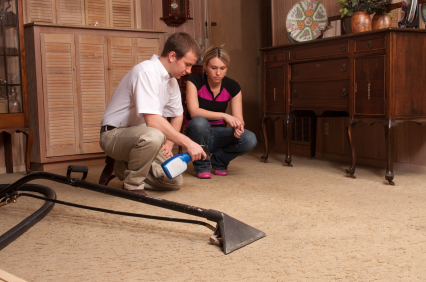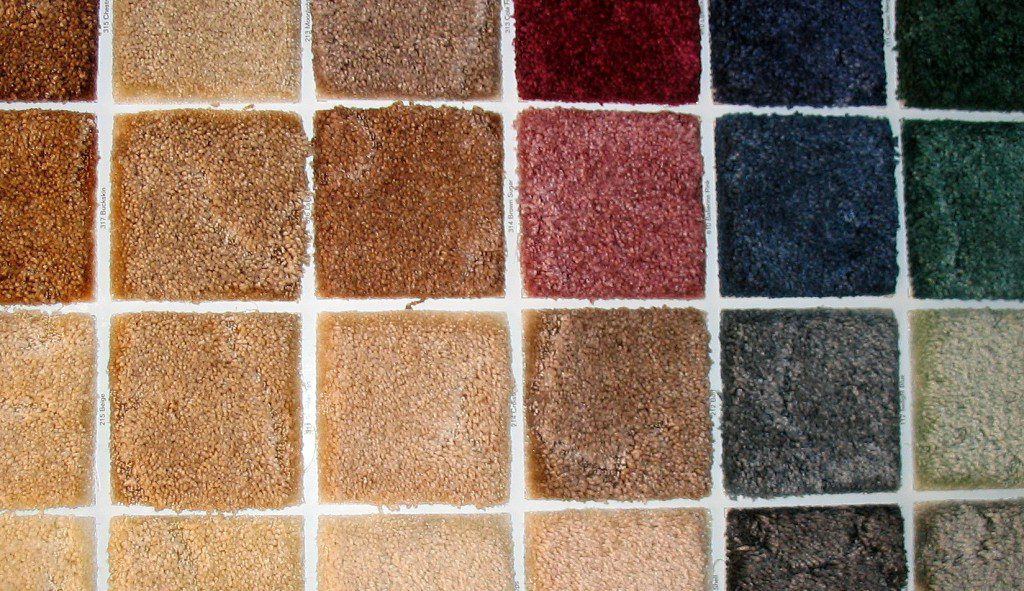10 Tips to Consider When Buying Carpet
There are many benefits to installing carpet throughout your home including comfort, sound absorptionAbsorption is the process by which a material takes in or so... More, look, and design versatility as carpet is available in many colors, patterns, and materials. Replacing worn out carpet with new carpet can revitalize a room that has lost its charm. There are so many carpet types and styles available which makes choosing the right colors, patterns, and materials a difficult, if not overwhelming, task. When buying carpet, it is important to choose the right color to suit the décor of your home and the right type of material so you can provide effective carpet care and maintenanceMaintenance is the routine care, inspection, and repair of a... More. The following 10 tips will help you choose the right new carpet for your home.
- Choose the Right Carpet Padding: Carpet padding is important for providing support and extra cushioning for the carpet and choosing inadequate padding or no padding at all will result in wear and tear. Quality carpet padding material is made from rubber or foam and helps prevent deterioration of the carpet backing and fibers. It can also help insulate your home and absorb sound. Make sure to choose carpet padding that matches the carpet you plan to buy according to the recommendations of the carpet manufacturer and install firm, dense padding in areas with higher foot traffic.
- Choosing a Carpet Style: There are several carpet styles available such as plush, textured, frieze, Saxony, and Berber that each have their own unique look and feel. Many homeowners may want to choose a carpet style based on look, but you should consider the care and maintenance that each style requires first. Saxony and plush carpeting is better suited for low traffic areas such as living rooms and bedrooms because foot prints and vacuum tracks can appear in the pile. Berber carpeting is very dense and durable which makes it suitable for high traffic areas and textured and frieze carpeting hides dirt and debris which also makes it a good choice for high traffic areas.
- Consider Carpet Prices: New carpet prices vary greatly between different styles and materials which makes it possible to find a quality carpet that best suits your home and budget. It helps to consider where the carpet will be installed when shopping around because the location of the carpet in your home can help you determine the right price. Stain-resistant carpeting is among the more expensive options but it may be worth the price in an area that is heavily used like the living room. Tile carpeting may be a more cost effective option if you have pets or kids because you can replace sections of stained or worn out carpeting instead of the whole thing. Areas that are prone to high traffic or damage such as stairways and basements should get carpeting with cheaper materials.
- Choosing a Carpet Provider: You can buy carpeting from a number of sources including flooring companies, department stores, and the internet but it is best to buy carpet from an established flooring company that specializes in carpet sales and installation. Flooring companies that specialize in carpeting have the largest selection of new carpet and their staff can answer questions about their products to help you choose a carpet style. Make sure the company you choose also provides quality carpet installation services or works with a subcontractorA subcontractor is a professional or company hired by the ma... More with a solid reputation.
- Consider Carpet Care and MaintenanceMaintenance is the routine care, inspection, and repair of a... More: You must provide good carpet care to maintain the look and condition of your carpeting which makes it best to choose a carpet type that you can easily maintain yourself. Stain resistant carpets are great for high traffic areas because they require less cleaning and textured carpeting is also suitable for high traffic areas because of their resistance to dirt. Make sure you are aware of the maintenanceMaintenance is the routine care, inspection, and repair of a... More requirements for a carpet type before you buy so that you can avoid high maintenanceMaintenance is the routine care, inspection, and repair of a... More carpeting that you cannot care for yourself. Regardless of what type of carpeting you choose, having them cleaned with professional carpet cleaning services once a year can greatly extend their life.
- Beware of Warranties: Every carpet manufacturer offers plenty of warranties for their carpeting including five and ten year warranties, stain warranties, wear and tear warranties, and matting and crushing warranties. However, these warranties can be difficult to work with because a homeowner’s definition of “wear” may not match the manufacturer’s definition of “wear.” Most defects in a carpet are a result of the installation so make sure to ask your carpet provider before buying anything what your options are if you are unhappy with the carpet installation.
- Choosing Colors and Patterns: Choosing the right color or pattern for your carpeting can be the most intensive part of the process because there are seemingly endless options available. Some things you should decide before choosing a carpet include the kind of feeling or mood you want to create and whether you want the carpet to be a focal point or background furnishing in a room. Take some carpet samples home with you to see what they look like with the rest of the room in the natural light before making a decision.
- Choosing Carpet for Stairs: The stairway in a home experiences a lot of foot traffic and the carpeting on a stairway must be bent over each step during the installation, making it important to choose durable carpeting for stairs. Carpet for stairs should be made from cut pile material instead of looped pile materials that can become too stretched out over stairs, and it should also be dense to avoid wear and tear. The best option for stairway carpeting is woven wool carpeting because it is extremely durable but it is also quite expensive.
- Going Green with your Carpet Choice: New carpet and padding made from synthetic material contains volatile organic compounds (VOCs) that can impact indoor air qualityIndoor air quality (IAQ) refers to the condition of the air ... More and cause certain health effects such as allergies and respiratory problems. You can avoid products with VOCs by choosing carpeting that is made from organic materialsOrganic materials are derived from living organisms, such as... More such as wool and jute. There are also carpet types available that are made from recycled materials as opposed to synthetic materials that mostly contain fossil fuel byproducts. You can learn more about the environmental effects of different carpet types from the Carpet and Rug Institute’s Green Label Plus program or the Green Seal certification program.
- Choosing Between Carpeting and Area Rugs: In certain areas of the home, area rugs may be a better option than carpeting which makes it important to know when to use each. Carpeting is more affordable than area rugs and provides comfort, insulationInsulation is a material used in buildings to reduce the tra... More, and sound absorptionAbsorption is the process by which a material takes in or so... More, but it also holds dirt, allergens, and odors and generally needs replacement within 10 years because of wear and tear. Area rugs are available in more unique colors and designs and they can be moved from room to room as well as house to house. The biggest disadvantage of an area rug is that it will only provide partial coverage of the floor so the flooring underneath it must be in good shape.
The carpet in a home has a huge effect on the look and comfort of a room which is why choosing a new carpet should not be taken lightly. There is plenty to consider when making this decision such as the style, type, price, padding, and maintenanceMaintenance is the routine care, inspection, and repair of a... More which will help you choose the carpet that is best suited for your home. Part of effective carpet care includes having your carpet professionally cleaned at least once per year so talk to a local professional about pricing for carpet cleaning services. Choosing the right carpet and providing proper care and maintenanceMaintenance is the routine care, inspection, and repair of a... More will help improve the feel and appearance of your home.














